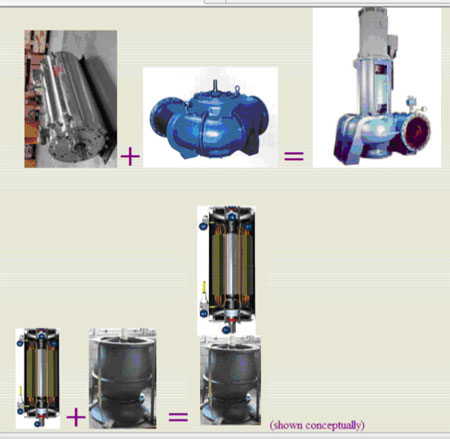In the February 2008 issue, we discussed various ways to lift water ("Lifting Water: What Are Your Pump Options?", Pumping Prescriptions). Starting with the 4,000-year-old Archimedes Screw, we touched on the advantages and disadvantages of options including the vertical sump, wet submersible pump, dry submersible, dry well close proximity design and dry well U-jointed shafting option.
As always, we received comments and feedback from many of you, including the question: How do I move from my situation to a better one? In other words, is it possible to retrofit a less-than-optimal installation with a better solution, and how?
Webster's Dictionary defines the verb to retrofit as:
- Provide with parts, devices or equipment not available or in use at the time of the original manufacture
- Fit in or on an existing structure
- Substitute new or modernized parts or equipment for older ones
Retrofitting compromises between two extremes: repair of the component(s) within the installation versus complete replacement of the entire installation.

Submersible Motor Setup
A retrofit is considered when the old equipment begins to fail too frequently (for instance, the pump shafts break every year) and when a partial modernization of the installation is significantly less expensive than removing the entire system and replacing it with a more modern one. For example, replacing a lift station with a new one could cost a municipality tens of millions. In such a case, new ideas, technologies and methods can solve the problems of old, obsolete and outdated designs.
Recent flooding from natural disasters, like storms and hurricanes, has added a new dimension to the challenges facing municipalities. The options described in the February 2008 article may not all provide foolproof assurance against a statistically unlikely, but potentially disastrous, flood.
Sump pump or dry pit (close proximity or U-jointed) options keep the motor far from the pump and protect against flood, but a long shaft imposes unbalance whip forces that can increase with time and reduce pump reliability. Submersible pumps (either wet or dry) solve the issue of the motor for awhile, but their windings are separated from the pumpage by a mechanical seal. If it fails, the pumpage can flood the windings and kill the motor. Another possible option is a submersible motor not directly coupled to the wet end, but with a regular coupling between it and the pump.
One of the benefits of retrofitting with a submersible motor is that the wet end (the pump) does not change. The regular motor (whether coupled in close proximity or separated by long, U-jointed shafting) is removed and replaced with a submersible motor. The shaft of the submersible motor is not directly attached to the pump impeller and is separated by the seal. The bearing housing of the pump is modified to have its shaft separately coupled to the motor shaft.
During normal operation, such a retrofitted installation operates normally as a dry or wet motor. In the event of flooding, even of the entire station, the submersible duty motor is not affected; it continues to operate as a regular submersible motor since it is designed to operate underwater.
Such a retrofit saves the millions required to construct a new station or remove it from a flood zone. At a minimum, it saves hundreds of thousands that would be needed to replace the entire pump with a new design and modify the piping to fit to the flanges of a new pump.
The compactness of the design makes it more efficient, and saves energy. Typical water lift stations have motors with a wide range of horsepower. Operating a relatively small motor (say, 400 hp) costs more than $250,000 a year, assuming non-stop operation at $0.10/kWh energy cost. Even a 10 percent savings would amount to $25,000 year, not to mention provide a more reliable, dependable design.
It is easy to design an expensive system, but not so easy to avoid complexity and maintenance issues. In contrast, it takes time and attention to detail to design a simple, reliable system.
As always, we will review your feedbacks, questions or suggestions and include as many as possible in a future issue of Pumps & Systems. In the meantime, keep on pumping!
Pumps & Systems, February 2010

